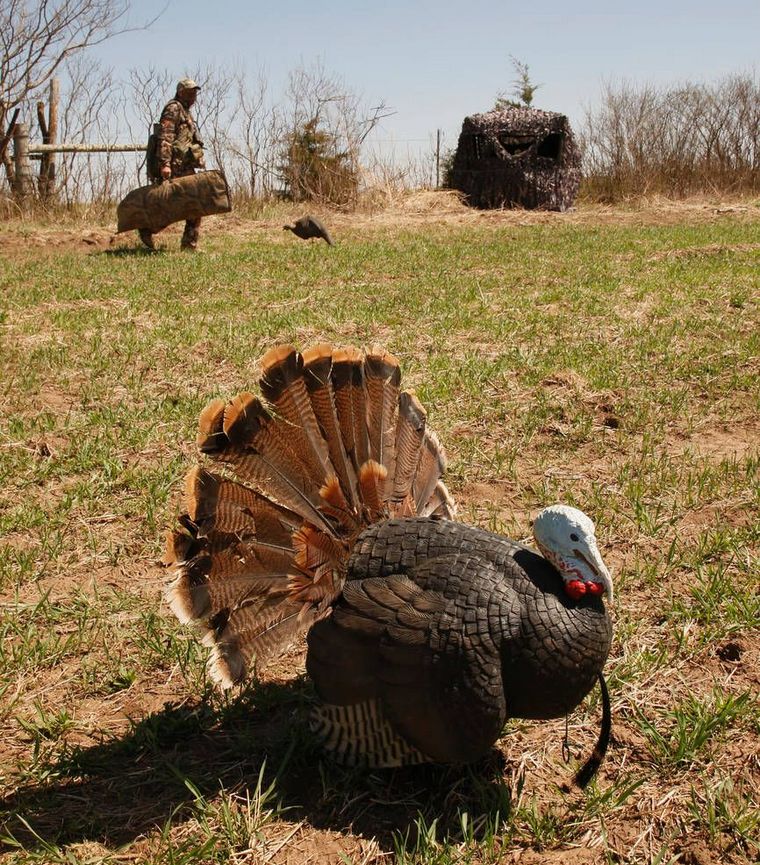
I believe a wild turkey can make a fool out of even the best hunter — but, I also believe, most of the time, they can’t do that without our assistance.
Though I have vivid memories of every turkey I’ve ever shot, I also remember the ones that got away — and that’s good, because they taught me some valuable lessons.
That’s why I asked three accomplished turkey hunters, OOD Senior Editor Gord Ellis, OOD Turkey columnist Jeff Helsdon, and OOD contributor James Smedley, to recount their most memorable turkey-hunting mistakes. What follows is your chance to learn from the misfortune of others.
Strategic slip-ups
It takes tactical know-how to kill a gobbler but, without sound strategy, you’ll never have the opportunity to use it. Strategic slip-ups before and during the turkey season prevent you from making contact with birds. Here are my greatest hits.
The “It’s a long season” mentality
This mindset gets me in trouble every few seasons. It lulls me into thinking I should go trout fishing or do other things instead of going turkey hunting, because, well, it’s a long season, and I’ve got lots of time. The problem is, it’s not a long season, especially when you consider all the hunting days lost due to bad weather, work, family obligations, and other unexpected things.
Half-assed scouting
There have been times I’ve believed scouting wasn’t necessary, because I’ve harvested birds in the same location several years in a row and “knew” their routines and how to hunt them.
I made this mistake last season, and, as a result, didn’t know about the active logging operation that was too close to my best hunting spot until I tried to set up there on opening day.
Skipping the chat with the property owner
Landowners often have excellent information about the size and composition of the flock, dominant birds, where and when they were gobbling, their travel routes, and if anyone else has been granted permission. If you are not asking them about their turkeys, you’ve made a big mistake. A few years ago, I hunted for several days before speaking to the landowner, who promptly told me exactly where I should set up at first light. I quickly filled my tag the next morning.
Not enough hunting spots
This is my biggest strategic mistake every turkey season. Having access to more properties increases the odds of finding more birds. It also allows you to place less pressure on the flocks that reside in each property you hunt, thus reducing the odds of spooking birds or having them pattern you.
Tactical tragedies
It takes one little slip-up to end any chance of placing your tag on a gobbler. Here are the ones my colleagues and I know all too well.
Shotgun schmozzles
Of all the turkey hunting mistakes, firearms-related failures are the worst. That’s because, whether the shot never happens or turns out to be a miss, the result is the same: you sit there in slack-jawed disbelief as a turkey runs off.
Jeff Helsdon’s most memorable shooting mistake had to do with pre-season sighting and patterning, something he’s normally a stickler about. “I missed a bird last season because I had sighted the gun in, but then changed loads. It shot slightly different, and that was all it took to miss the bird.”
Gord Ellis’s firearm failure occurred because he let a gobbler get too close — something many of us have also experienced.
“I’d been calling from a field to a group of birds in an opposite field. They were a long way away, and I didn’t really think it was going to work. But I started calling and sure enough, the big gobbler and his girlfriends started coming my way. Fast. I was up against a big oak tree, but otherwise felt a bit exposed. The gobbler crossed a line of trees and began bee-lining directly my way. For some reason, I’d not properly prepared myself to shoot, and had the gun across my legs. The gobbler was not stopping or turning, and I had to freeze. The jelly head got closer and was finally just about eight yards away when it stopped and started to display. It turned a bit and I pulled my gun up. The bird was so close I could see its pupil. Too close. I shot, right over its head. It flew off like a condor and landed, unscathed in a tree.”
Two seasons ago, I missed filling a tag by shooting at a gobbler that was too far, which is odd for me because I normally limit my shots at turkeys to 35 yards or so.
The circumstance was unusual, however. I noticed a gobbler breeding a hen at the base of the ridge I was on. Since, I was on private property, and his attention was obviously elsewhere, I used big tree trunks to block my approach and got within what I thought was effective gun range. I then set up and when the gobbler cleared the hen, shot and missed. Afterwards, I paced off the range and found that what I thought was 40 yards was more like 50, which was too far for the pattern my gun was throwing. I suspect the hill’s slope and his size threw my range estimation off. Had I known the actual range, I would have never tried. I guess it was his lucky day, in more ways than one.

Calling calamities
Most turkey hunters have called too much or too little or hit a sour note at just the wrong time. But sometimes calling mistakes are not so much about calling as they are about misjudging the effectiveness of a calling sequence and waiting patiently enough to see what the call brings in.
James Smedley told me two turkey-calling calamities that still haunt his dreams.
“I had made a couple of calls, and since I was calling blind and had no response, decided to take a lunch break and change the batteries in my GPS. Right in the middle of this, I looked up and discovered two gobblers running right to me while my gun was leaning against a tree.”
On another occasion, he had been calling and getting responses from a gobbler, but when the bird went silent for quite a while, Smedley made a big mistake. “I thought the bird had lost interest, so I texted Gord Ellis, who I was hunting with, to let him know what had happened. While I was doing that, the bird showed up behind me, and I was busted.”
I was also caught flat-footed, years ago, while hunting deep in the woods. I walked to a likely looking spot, and, before setting up, called. A good gobbler immediately responded, but seemed a long way off in that hilly country. I was still looking for a place to set up when he charged in, immediately busted me and ran off.
Don’t fence them in
One of the strangest things about turkeys is their reluctance to cross obstacles they could easily hop over or fly across. Gord Ellis tells a tale about how this contributed to a turkey hunting failure.
“I was sitting on the edge of a large field, with my back against a tree. There was also a long fence at my back as well. But turkeys can fly, right? So I was calling away, but nothing answered. Then, I heard the low purr of a gobbler displaying. I slowly turned my eyes. Sure enough, a bird was just a few yards away, to my immediate right, on the wrong side of the fence. It was trying its darnedest to get to my decoy, to no avail. The story does not have a happy ending. Except for the gobbler.”
Years ago, I had a similar experience while hunting with OOD Gun Dogs columnist Tom Goldsmith in a hardwood that was new to us. We got in and set up in the dark, and, as soon as legal hunting time arrived, we began talking to a very receptive gobbler who came in fast, but stopped about 60 yards away and wouldn’t come in any farther. We could barely see him through the brush strutting perpendicular to us for what seemed to be an eternity — before fading off. Knowing he couldn’t have detected us, we moved up to see if we could make contact again and quickly discovered that an old and relatively low stone fenceline turned out to be the obstacle he would not cross, though he could have easily hopped over it.

Moving violations
Perhaps the toughest part of turkey hunting is knowing when it is OK to move and when it is better to stay still. Most hunters have been busted moving at the wrong time at least once.
Helsdon, however, tells a heartbreaking tale of not moving when he should have: “I was set up with a combination of a commercial mini-blind and natural cover while hunting in Kentucky last year. When I first heard the bird, it was drumming behind me. There was long grass in the area and I had set up to see through a break in it. I considered using the cover to turn, rise up, and shoot, but then realized there were several birds there and I wouldn’t get a clean shot. One bird came forward, but I never got a clear view of it through the grass. I didn’t shoot, hoping for a clear shot, and kicked myself for not trying for the bird when it was by itself by rising up and shooting quickly.”
I was guilty of a different sort of moving violation a few seasons ago. I was working a gobbler and watched it make its way to me, sounding off all the way. When it entered a depression in the terrain, I got my gun up, intending to shoot him as soon as he emerged on the other side. Normally, this would have been a good move. Unfortunately, I was so focused on that gobbler that I didn’t see a hen 20 yards off to the right of me. But, when I shouldered my gun, she sure saw me. No birds were harmed.
Decoy disasters
You’d think that there wouldn’t be a lot of issues with setting up turkey decoys but, like everything else in turkey hunting, things can go wrong.
I’ve placed my decoys too far from me, so that a gobbler stopped and strutted too far away. I’ve set them up so that when birds appear, I have no good shooting lane to the turkey. I’ve placed them too close to me, so that when birds zeroed in on the decoys, they also zeroed in on me. I’ve not planted my decoy poles deep enough in the ground so decoys have fallen over at the most inopportune of times. I’ve positioned decoys in a place that encouraged turkeys to approach from the worst way imaginable.
Over accumulated turkey hunting seasons, we all make mistakes. And while they make for good stories and head-shaking memories, they also serve a higher purpose — which, I think, is to teach us the error of our ways.
The takeaway
12 things you can do to avoid these turkey hunting mistakes
- Pattern and sight in each new load
- Your best chance of cleanly killing a gobbler is when it is unaware of you and at a distance where your pattern performs optimally
- If your shotgun has a single bead, make sure you get your head down on the stock when shooting. Adding a rear bead or optical sight to your gun eliminates that issue
- Wait patiently after you call. Just because you don’t get a response doesn’t mean the bird is not coming in
- Always keep your gun within reach, and, preferably, at the ready
- Set up first, get comfortable, sit still, and then start calling
- If you must set up near obstacles, such as fences or creeks that might influence a bird’s approach, position yourself to take advantage of them
- If you must move, whether to shoot or reposition, first ensure a bird isn’t watching you. Otherwise, sit still until you know for sure it’s OK to move
- Set up your decoys with care: close enough so approaching gobblers will display within optimal range and in a good shooting lane, but not so close to as to draw attention to yourself
- Gather all the intelligence you can — by scouting, talking to landowners, and using satellite imagery or trail cameras
- Get permission for as many properties as you can
- You can’t tag a turkey sitting at home. Get out as often as you can
Originally published in the May 2020 issue of Ontario OUT of DOORS magazine.


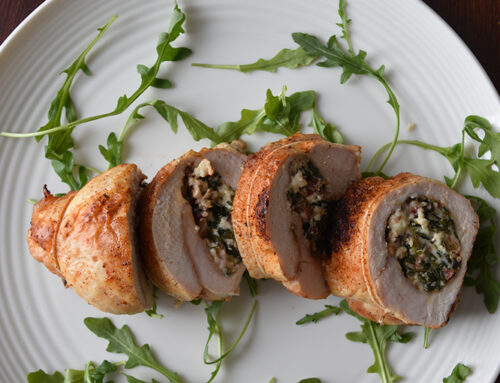
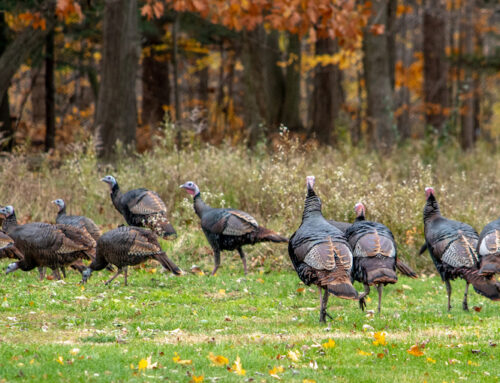
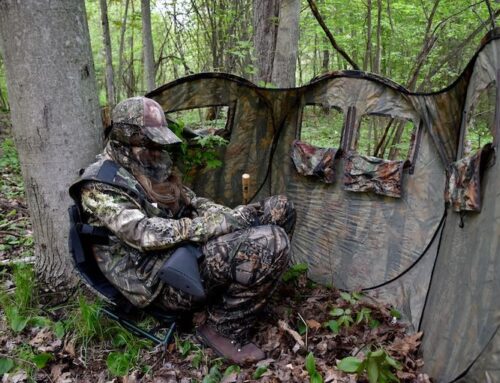
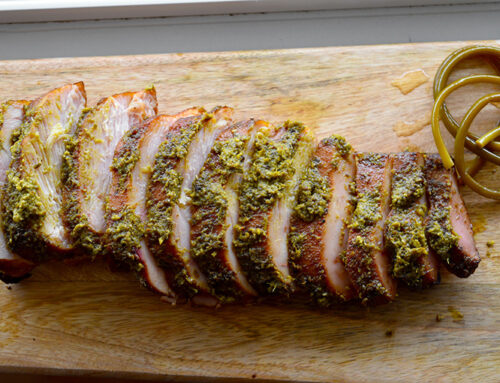
Leave A Comment